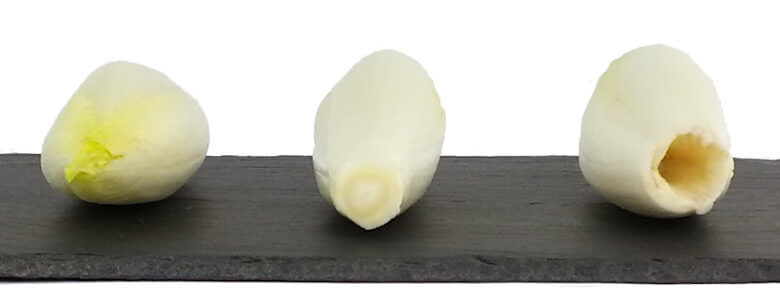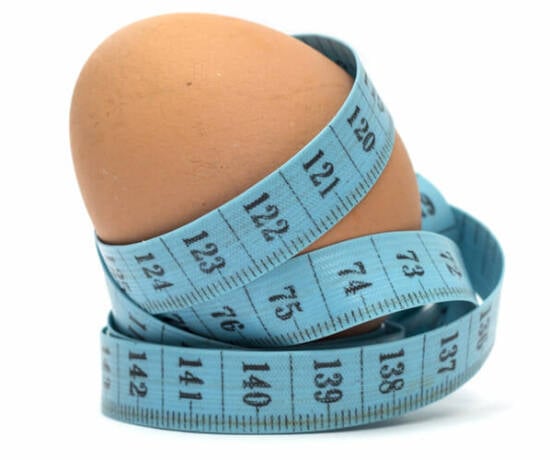Belgian endive may not be the most popular vegetable, but this bitter tasting head of lettuce is quite an interesting variety to your vegetable side dish recipes and worth knowing, eating and exploring. How you clean the Belgian endive will influence the flavor-outcome of some of your dish. A few simple tips will follow.

A well-grown head of Belgian endive looks like this; a tight, cone-shaped pale- white lettuce head. Belgian endive is called witloof in Belgium and witlof in Holland. A direct translation would be white leaf (wit = white, loof or lof = leaf).
Belgian Endive has a bitter flavor, but since this vegetable has a high moisture content, the bitter flavor is a pleasant one. One part of the endive that is a little bit more aggressive, more astringent, is the core.
How Do We Use Belgian Endive?
Before we talk about the ways to clean, let’s first see how we use the Belgian endive, because that may determine the cleaning method.
- As an appetizer in which the leaf of the endive functions as a vessel or boat for a blue cheese mix or any type of salad.
- In a salad, in soup, a stir fry or in a casserole, the Belgian endive is cut in julienne or larger pieces.
- As a cooked vegetable, entire head intact, or sliced, with or without a sauce.
- Grilled or roasted. Usually the endive head is halved.
How to Clean Belgian Endive – The Secret is in The Core.
- When you use the individual leaves of the lettuce head, like an appetizer stuffed with pate, fish or a salad, of course there is no core in play. You’ll need beautiful, spotless leaves that are strong enough to hold the stuffing. You cut a thin slice off the bottom and you start peeling leaf by leaf off the head, throwing away the damaged ones.

2. When you don’t need the use the head as such, and you’ll cut the Belgian endive for a salad, a stir fry, a soup, or a casserole, simply cut the head in half and then cut out the bitter core. Like you see in the middle of the photo above. Then julienne or cut in the size you want.
3. When you do use the entire intact endive, like I did in Belgian Endive au Natural, always remove the core from the lettuce head. The core is found at the bottom of the lettuce head. The core is inside the darker ring and has the shape of a cone, almost like a cone in a cone and by using a small paring knife, you can remove it easily. That core is hard, dense and more bitter than the moisture rich leaves and may influence the flavor of you dish negatively.
4. For grilling or roasting the lettuce head, you usually cut it in half and then again you may want to cut the core out first, however this method of cooking that ‘sweetens’ the vegetable, may hide the bitterness enough that taking the core out is not a necessity.





No Comments